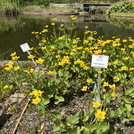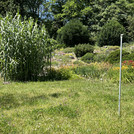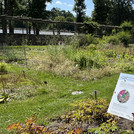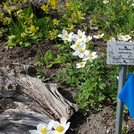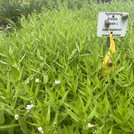PhenObs – Botanical gardens as a global phenological observation network:
PhenObs is a global network of botanical gardens bringing together researchers, students and citizen scientists to learn more about the impacts of climate change on the phenology of herbaceous plant species. Because of their diverse collections of plants, botanical gardens represent ideal locations to carry out phenological, ecological, biogeographical, and morphological studies across large numbers of diverse taxa.
PhenObs was established in 2017 by the botanical gardens of Jena, Halle, Leipzig (Deutsches Zentrum für integrative Biodiversitätsforschung-iDiv) and Berlin and is coordinated by the University of Jena. The Botanical Garden of Potsdam and our workgroup have been involved in PhenObs since April 2021. Weekly, we undertake a standardized phenological monitoring on 100 plant species. In addition, students are given the opportunity to actively participate in this research project as part of the module “Ecology & Diversity of terrestrial plants”.
Please have a look on the official website for [more details ]
Mission
Despite half of the plant species on Earth being herbaceous, we know very little about their phenology, as this research has mostly focused on woody species. PhenObs aims to improve the knowledge of the phenological responses of herbaceous species to the biotic and abiotic environment, which will enable us to predict herbaceous phenology from species provenance, climatic requirements, phylogeny and plant traits.
The basic approaches are:
- How does the phenology i.e. distinct phenological phases of herbaceous species vary at regional and global scale?
- What are the drivers of variation in plant phenology in herbaceous species across the growing season and in response to variation in climate?
- Can plant phenology be predicted from species’ trait composition, provenance, position and extent of the distribution range and species’ phylogeny (as proxy for their eco-physiological adaptation)?
- What are the implications of this variation with respect to species performances and assembly, biotic interactions as well as ecosystem processes and services under changing land-use and changing climate
(2) Project details site(s)
Aims | Aim of the Project is to conduct research that will better enable us to predict phenology from species provenance, environmental niche, phylogeny and functional traits and investigate the phenological responses of herbaceous species to the biotic and abiotic environment. |
Approach | A standardized protocol for a weekly phenological monitoring is used to collect data about the phenological stages. Plant traits (e.g. Specific leaf area [SLA], leaf nutrients, vegetative and generative height) are measured to study the species performance. Garden and site characteristics (climatic conditions, soil, light...) are recorded. |
Expected Outcome | To be able to make statements on the following main question through long-term studies: How does climate change affect seasonal variations in plant phenology? |
Persons involved
| PI
PhD student
Technical assistant |
Cooperation partners | Botanical Garden and Botanical Museum Berlin Institute of Ecology and Evolution, Plant Biodiversity, Friedrich Schiller University Jena |
Outreach | Sporbert, M., Jakubka, D., Bucher, S.F., Hensen, I., Freiberg, M., Heubach, K., König, A., Nordt, B., Plos, C., Blinova, I., Bonn, A., Knickmann, B., Koubek, T., Linstädter A., Mašková T., Primack, R.B., Rosche, C., Shah, M.A., Stevens, A.-D., Tielbörger, K., Träger, S., Wirth, C., Römermann, C. (2022) Functional traits influence patterns in vegetative and reproductive plant phenology - a multi-botanical garden study. NewPhytologist, 235, 2199-2210. https://doi.org/10.1111/nph.1834 |


